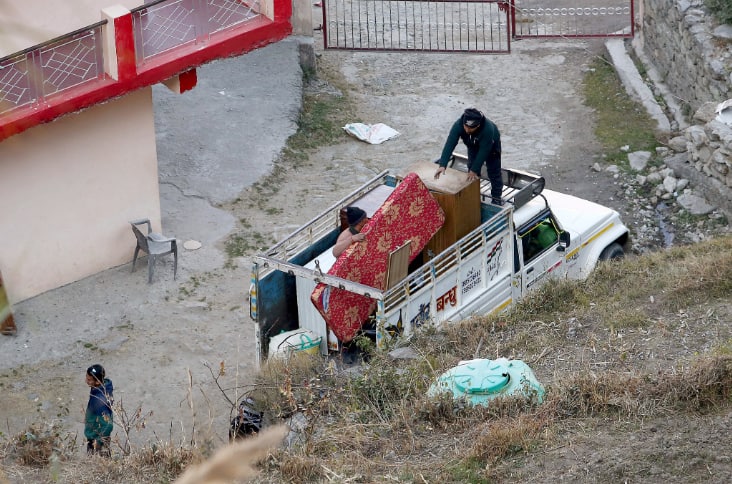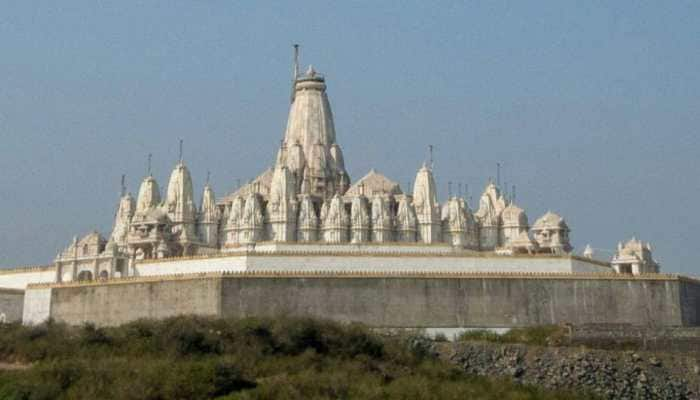Joshimath crisis: The 1976 report that warned 'sinking' town has fragile geology
Joshimath crisis: The situation of land subsidence in Joshimath has been exacerbated by increased construction activities and hydroelectric projects.
- Joshimath, the 'sinking' hill town in Uttarakhand, is facing land subsidence
- Panic arose when cracks appeared in over 600 homes in the town
Trending Photos
) Pic Credit: ANI
Pic Credit: ANI New Delhi: Joshimath, the 'sinking' hill town in Uttarakhand, is facing land subsidence and many buildings in the area have become unsafe for habitation as a result. Protests are now ongoing in the town as residents demand compensation for their damaged homes. Panic arose when cracks appeared in over 600 homes and then residents were asked to move out to safe shelters in case of further damage to their homes. Residents are expressed to be emotionally disturbed by the sudden displacement from their homes.
Chief Secretary of Uttarakhand, on Tuesday (January 10), held a meeting at the secretariat to discuss the landslides in Joshimath. He instructed the District Magistrate of Chamoli to closely monitor the situation as per ANI. The Chief Secretary emphasized the importance of taking steps to prevent loss of life and property caused by landslides, suggesting the immediate relocation of families to safer areas and the demolition of buildings considered at high risk as priority measures.

Report on Joshimath by Mishra Committee in 1976
Joshimath is currently facing a grave threat from land subsidence. According to a report by the Mishra Committee in 1976, Joshimath lies on an ancient landslide deposit of sand and stone, and not on the main rock. So, this means that it resides on landslide debris. The report also highlighted the undercutting by river currents of Alaknanda and Dhauliganga as contributing factors to the landslides.

Geographically, the area is characterized by scattered rocks covered with old landslide debris consisting of boulders, gneissic rocks, and loose soil, with a low bearing capacity as per the report. These gneissic rocks are highly weathered and have a low cohesive value, making them susceptible to high pore pressure when saturated with water, particularly during monsoons.
Increased construction, and hydroelectric projects made land subsidence worse
The situation in Joshimath has been exacerbated by increased construction activities, hydroelectric projects, and the widening of the National Highway in the past couple of decades. These activities have made the slopes highly unstable and vulnerable to landslides. The running streams from Vishnuprayag and sliding along natural streams are also cited as other reasons for the city's fate.
Several experts said that a complete shutdown of development and hydroelectric projects in the region would be the suitable step now. However, the immediate need is to relocate the residents to a safer place and then reimagine the town's planning to accommodate the new variables and changing geographical factors.
Drainage planning is one of the most critical issues that need to be studied and redeveloped. The city is suffering from poor drainage and sewer management, leading to more waste seeping into the soil, loosening it from within. The irrigation department has been asked by the state government to look into the issue and create a new plan for the drainage system.
(With agency inputs)
Stay informed on all the latest news, real-time breaking news updates, and follow all the important headlines in india news and world News on Zee News.
Live Tv







)
)
)
)
)
)
)
)
)
)
